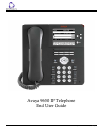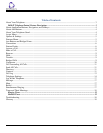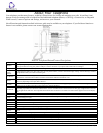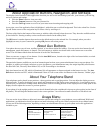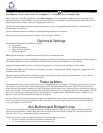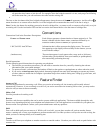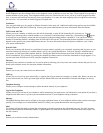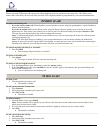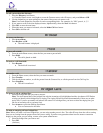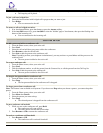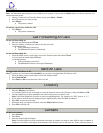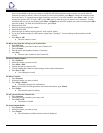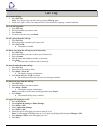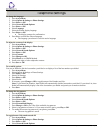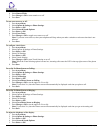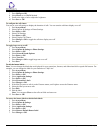
9650 IP Telephone End User Guide | 4 | Page
About Application Buttons, Navigation, and Softkeys
The display screen has three visible application lines that you use to view and manage your calls, your contacts, your call log,
and your options and settings.
• Press the Phone button to view your calls.
• Press the Contacts button to view your Contacts list.
• Press the Call Log button to see a list of your most recent incoming and outgoing calls.
At any time, one of the application lines is highlighted - with white text on a black background. This is the selected line. Use the
Up and Down arrows on the navigation keys to select a line by scrolling to it.
The four softkey labels at the bottom of the screen go with the softkeys directly below the screen. They show the available actions
for the selected line. Pressing a softkey carries out the action shown on the softkey label.
The OK button is another shortcut that carries out the default action on the selected line. For example, when you select
(highlight) an entry in your Contacts list, pressing OK places a call to that person.
About Aux Buttons
Your phone has two rows of extra, auxiliary buttons, or Aux buttons below the softkeys. You can use the Aux buttons for call
management, speed dial buttons, or features. The Aux buttons go with the Aux button labels on the bottom two rows of the
screen. The Aux button labels show the function of each of the Aux buttons.
There are two sets, or pages, of Aux buttons. Use the Aux Shift button, located to the right of the Aux button labels, to switch
between the two pages of Aux buttons.
The particular features available on your Aux buttons depend on how your system administrator has set up your phone. For
example, in addition to bridged extensions on your Aux buttons, your administrator may also assign frequently-used features
like Send All Calls, Directory/Next/Make Call, or Call Forwarding to Aux buttons.
Each Aux button has an LED, which is illuminated if a call appearance or feature assigned to that button is active. The Aux
Shift button also has an LED, which is illuminated if there is a call on one of the Aux buttons on the alternate, "hidden" page.
About Your Telephone Stand
Your telephone can be placed in two positions, a lower position and an upright position. You can adjust the display screen to
different angles. To move the display screen, gently pull from the top of the display screen towards you. As you pull the screen
towards you, you will hear a clicking sound. Each of these clicks is a locking position for the display screen. Gently push on the
display screen to adjust the screen to a previous position.
If your phone is in the upright position, reverse the tab located below the switchhook in the top ear piece pocket (on the front of
the phone). This will keep the handset seated in the correct position. You will need a small screwdriver to lift this tab out.
Avaya Menu
You can use the Avaya Menu to adjust and customize options and settings for your telephone, access additional Web-based
applications, get information about your phone and network settings, and log out. When you press the Avaya Menu button,
you see one of the following menus, depending on how your administrator has set up your system and on the applications
available to you:
Sample Menu 1 Sample Menu 2
Sample Menu 3
> Options & Settings
> Browser
> Network Information
>About Avaya one-X
> Your 1st Web Application
> Phone Settings
> Log Out
> About Avaya one-X
> Call Settings
> Application Settings
> Screen & Sound
> Advanced Options
> Network Information
> Log Out



